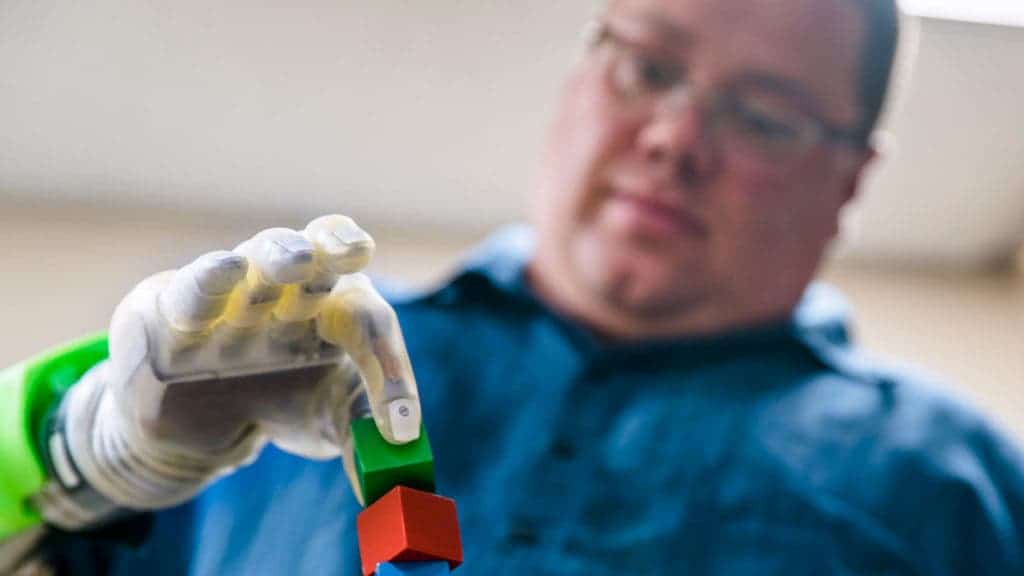
You might have already seen prosthetic robot hands controlled by an amputees’ thoughts. These are amazing but, since the technology is still in its infancy, they’re also plagued by many limitations. Biomedical engineers at the University of Michigan have made an important contribution to the field by demonstrating a new method that uses muscle grafts to produce a more sensitive response, allowing prosthetic users to make more natural movements with their robot hand.
Other prosthetic robot hands offer amputees control by measuring nerve activity in the residual limb. The problem is that this signal is very faint, so control over the robot hand is very clunky. This negates the value of having highly flexible prosthetics with many joints and a high degree of freedom. The bottleneck lies in the ‘control software’ rather than the hardware.
Writing in the journal Science Translational Medicine, researchers led by Paul Cederna have described a clever workaround. In order to amplify the control signal, the researchers surgically grafted small pieces of muscle onto nerve endings of the residual limb.
When an amputee loses a body part, such as their arm from the elbow down, nerves start growing on the residual forearm. Patients typically end up with a big ball of nerves called a neuroma which can be very painful when it’s touched, preventing them from wearing their prosthesis. Patients sometimes refer to this uncomfortable sensation as phantom pain.
However, for this study, the neuroma is useful. Instead of interfering with daily life, the ball of nerves wrapped around the muscle tissue harvested from the thigh, amplifying the electrical signal.

In order to control the robotic hand, electrodes were implanted in the muscle, which now detected a signal 100 times more powerful than before the nerves grew into the mini-muscles.
In experiments with three subjects, the nerves that control the thumb interacted with the grafted muscle just as they would if the person still had their real thumb intact.
This intent is powerful enough to send an electric signal to move the thumb of the robotic hand, called DEKA. However, the researchers like to call the prosthetic ‘Luke’s hand’, after Luke Skywalker from Star Wars.
The prosthetic is comprised of a semitransparent sheath that covers a mechanical skeleton that is attached to the residual limb through a custom-designed socket.
One of the patients involved in the study had an amputation up near the shoulder, but even in his case, the signal of the contracting muscle was strong enough to discern between different intended movements, such as flexing pointer finger while keeping the thumb isolated.
Using a computer algorithm that learned to translate the electrical signal into intended contractions, the participants were able to perform very precise coordinated movements, such as stacking a set of small wooden blocks or manipulating variously shaped objects.
Unfortunately, this technology is still in its early days. The entire setup is very cumbersome, requiring wires tethered to the participants. But, eventually, the researchers plan on developing a more compact version that the amputees can use in their day-to-day lives.


